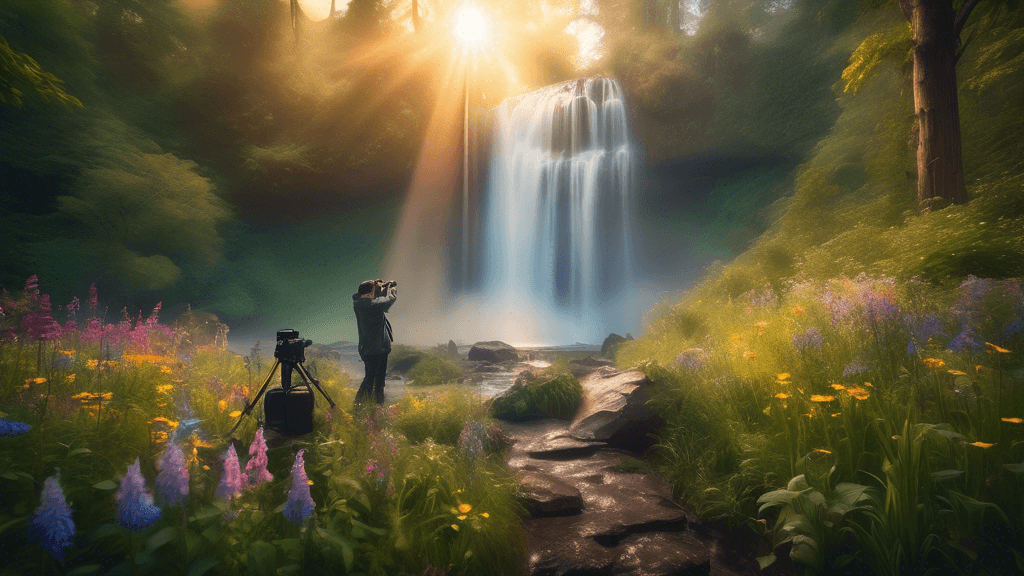
Capturing Nature: The Art of Using Water in Landscape Photography
Share
Understanding the Role of Water in Landscape Photography
Water, in its many forms, has always been a compelling subject for photographers. Its dynamic, ever-changing nature provides unique opportunities to capture stunning landscapes that convey both movement and tranquility. But what makes water such an essential element in landscape photography? How can photographers harness its potential to enhance the artistic quality of their photos?
The Magnetic Appeal of Water in Landscapes
Water attracts the eye with its surface texture, reflections, and inherent movement. From the gentle flow of a mountain stream to the thunderous roar of an ocean wave, water injects life into landscape photography. It acts as a natural mirror, reflecting skies, foregrounds, and distant objects, thus adding depth and symmetry to compositions.
Techniques for Capturing Water in Landscape Photography
Successful incorporation of water into landscape photos requires mastery over various techniques. Here are some crucial ones:
- Long Exposure: Using a slow shutter speed to capture the movement of water creates a smooth, ethereal effect that can evoke a sense of calm and timelessness.
- Reflections: Calm water bodies like lakes offer reflective surfaces that are perfect for symmetrical compositions or for adding interest to the sky when it is filled with colors during sunrise or sunset.
- Refraction and Clarity: Clear waters can reveal the world beneath, showing submerged rocks, plants, or even aquatic life, adding an element of surprise and depth to the image.
Choosing the Right Equipment
To effectively capture the nuances of water in landscape photography, having the right equipment is essential. A sturdy tripod and a circular polarizing filter are invaluable tools. The tripod stabilizes the camera for long exposures, while the polarizing filter manages reflections and can enhance the color saturation by reducing glare from the water surface.
Incorporating Water into Various Landscape Themes
Water can be adapted to various landscape themes, each requiring a different approach to make the most of the scene: tools. A sturdy tripod and a circular polarizing filter are invaluable
- Seascapes: Capturing the vastness of the sea often involves dealing with harsh light and reflective surfaces. Timing shots during the golden hours (shortly after sunrise or before sunset) can dramatically alter the mood and color palette of the seascape.
- River Landscapes: Rivers and streams, with their continuous flow, provide a dynamic element to woodland or mountain scenes. Including elements like rocks or foliage can add context and scale, illustrating the story of the landscape through which the water travels.
- Lakes and Ponds: These often still waters are perfect for capturing clear reflections. Early morning, when the air is still and the light is soft, is ideal for achieving mirror-like reflections. flective surfaces. Timing shots during the golden hours (shortly after sunrise or before sunset) can dramatically alter the mood and color palette of the seascape.
Expert Insights
“The key to utilizing water in landscape photography is to see it as a living element of your composition. It has mood, motion, and a palette of textures that can transform your image,” explains John Smith, a renowned nature and landscape photographer. This quote emphasizes the importance of perceiving water not just as a subject, but as an active participant in the photographic storytelling process.
Moving Beyond the Basics
As you grow more comfortable with the technical aspects of capturing water in your landscape photography, challenge yourself to find unique perspectives. Could you capture the reflection of a starry night on a lake, or the harsh texture of a frozen stream? Each new condition water presents is an opportunity to explore creative new approaches.
Final Thoughts and Call to Action
Water in landscape photography is not just a challenge; it’s an opportunity. It offers endless potential for beauty and creativity. Whether you are just starting out or are an experienced photographer looking to enhance your skills, consider the power of water in transforming an ordinary scene into an extraordinary one.
Why not grab your camera, head to the nearest body of water, and start experimenting with all the techniques we’ve discussed? Share your experiences and breakthroughs online or with your community. Happy shooting!





